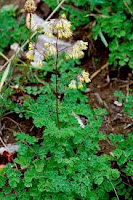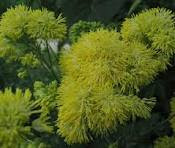Shiitake mushrooms have been used in Chinese traditional medicine for thousands of years, and so are classed as medicinal mushrooms rather than culinary ones. They have become a symbol of longevity in Asia because of their health-giving properties.
They can be used in much the same way as the ubiquitous white mushroom you find on every supermarket shelf, but they have a meaty texture, somewhat like chanterelles and oyster mushrooms but they are highly-prized in Asia, much as we prize truffles and morels in the West. They are relatively small when compared to the Giant puffball.
Shiitake means wood mushroom, or rather Shii refers to the tree in Japan on which these mushrooms grow naturally, and take means mushroom in Japanese. These mushrooms are also known as “Black Forest mushrooms” as they also grow there in Europe. You can now buy logs impregnated with shiitake spores and grow your own. If you buy fried shiitake you should soak them in hot water to reconstitute them before cooking them or putting them in salads - you can eat them raw.
 Shiitake contain several B-complex vitamins- B2, B3, B5 and B6, and the minerals, magnesium, manganese, phosphorous, selenium, copper and zinc, along with all the 8 essential amino acids, protein and dietary fibre.
Shiitake contain several B-complex vitamins- B2, B3, B5 and B6, and the minerals, magnesium, manganese, phosphorous, selenium, copper and zinc, along with all the 8 essential amino acids, protein and dietary fibre. Perhaps the best way of eating these meaty mushrooms is to sauté them for 7 minutes in olive oil to bring out their best flavour and maximize the health-giving nutrients. You can try the side dish recipe below.
The American Cancer Society has said that lentinam, which is found in shiitake mushrooms, can reduce and slow the growth of some cancer cells and at the same time it boosts the immune system to combat these unwelcome cells too. More trials on humans are needed for us to discover if shiitake mushrooms and their constituents can help in our fight against cancer.
Selenium, zinc and manganese all have antioxidant properties as do some of the other constituents of these mushrooms, and these combat the scavenging free radicals which can turn cells cancerous. These mushrooms may offer protection from breast, prostate and colon cancers.
Extracts from the mushrooms have been found to possess antifungal, antibacterial and anti-virus (including HIV-1) properties.
Shiitake mushrooms can also help prevent rheumatoid arthritis according to one study, and others have shown that they might help with lowering blood cholesterol levels and cardio-vascular diseases, perhaps helping to prevent atherosclerosis.
Lentin, a protein found in these mushrooms has anti-fungal properties and helps to inhibit the proliferation of cancer cells. L-ergothioneine found in these has potent antioxidant properties.
If you have gout or kidney problems, be careful - these mushrooms contain purines - you should not eat very many of them in your diet.
SHIITAKE SIDE DISH
Ingredients
250 gr fresh shiitake sliced,
1 large onion thinly sliced,
3 cloves garlic, peeled and finely chopped,
freshly ground black pepper and salt to taste
Method
Heat the oil(s) in a pan and then add the onions (with the chilli powder if using). Cook over a high heat for 2 minutes then lower the heat, stir and let them sweat, covered for 5-10 minutes.
Add the garlic and mushrooms and fry for a further 2 minutes or until the onions are soft. Season to taste.
(If using the other optional ingredients add them after 2 minutes of putting the garlic and mushrooms in the pan.)
Serve as a side dish with any meat or game.
This has Taste and is a Treat.




























